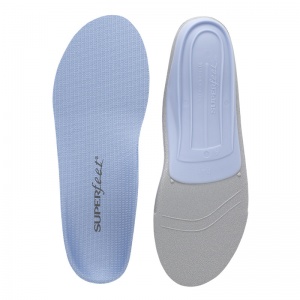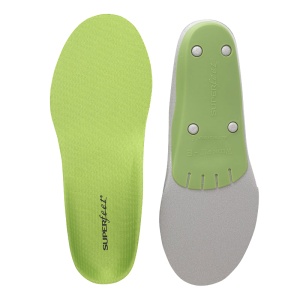What is Cuboid Syndrome?
Cuboid Syndrome, also known as dropped cuboid, locked cuboid and subluxed cuboid, is a condition affecting the cuboid bone, found on the outer side of your foot, down from your little toe.
Causes of Cuboid Syndrome
Cuboid Syndrome occurs when the stress placed on the cuboid bone during regular activity becomes too much and results in the tearing or injury of the tendons. Pulled from its natural placement, cuboids can also end up becoming misaligned with the rest of the foot. Dancers, jumpers and sprinters who often place pressure on this part of the foot are most likely to suffer from an injured cuboid bone. An accidental sprain can also be an immediate cause of Cuboid Syndrome, with the cuboid bone being damaged as it is pushed out as the rest of the falling foot was turning in.
Over-Pronated or Flat Feet are also at risk due to the uneven distribution of weight over the foot, people who know they over-pronate should aim to correct this with an appropriate insole to stop Cuboid Syndrome from occurring.
Cuboid’s Calling Cards
Cuboid Syndrome is much like other foot conditions that are essentially due to over-worked feet. Save for a sudden sprain or injury, the signs of Cuboid Syndrome are not always immediate, starting as a mild ache that comes and goes before worsening over time.
Symptoms include:
- Pain down the outer side of the foot which may also affect the ankle and toes
- Limping
- Tenderness and swelling around the injured area
- A sensation of “weakness” in the whole foot
- Increased pain during the first step in the morning is also common
Cure Your Cuboids
Treatment for Cuboid Syndrome varies depending on severity, with bone-realignment therapy being one option for badly displaced cuboids, this is when a foot care specialist will pop your bones back to where they belong.
Generally a lazy period of rest and relaxation and a well placed ice-pack is considered the best form of treatment. If being out of action doesn’t suit your feet, though, you can also try some light stretches and exercise to help stop the foot becoming stiff. Of course, any shoes that apply pressure to the cuboid or compress the foot such as high heels and tightly-fitting shoes are best kept away from sore cuboids as they recover.
Kind-to-Cuboid Insoles
Insoles for sufferers of Cuboid Syndrome should aim to provide padding to the affected area, this is especially true for sufferers who otherwise over-pronate when they walk. Insoles for this condition should be able to offer:
- Cushioning and padding
- Shock absorption to lessen pressure on the injured area
- Reduction of pronation by correctly aligning the foot
- Stabilising support for the foot
More insoles are available at our online store for the treatment of Cuboid Syndrome.
Powerstep Protech Pro Orthotic Insoles
- Reduces excessive over pronation
- Stabilising heel cradle provides support
- Extra heel cushioning helps heel pain and heel spurs
- Cushioned with comfortable shock absorbing Poron
Superfeet Blue All-Purpose Medium Arch Support Insoles
- Superfeet's most versatile and easy-to-fit insole
- Thin, high-performing and flexible, can fit almost any shoe
- agION antimicrobial finish keeps insoles clean and fresh
- Available in both adult and junior sizes
- Covered by the Superfeet 60-Day Money-Back Comfort Guarantee
Superfeet Green All-Purpose Wide-Fit Support High Arch Insoles
- The world's most popular shoe insole, now with wider fit
- Heel cup technology contours to the foot for total support
- Crafted from shock-absorbing foam for complete comfort
- Designed for use in any wide-fitting shoe
- Covered by the Superfeet 60-Day Money-Back Comfort Guarantee





.jpg)
.jpg)
.jpg)

.jpg)
.jpg)
.jpg)

.jpg)
.jpg)
.jpg)